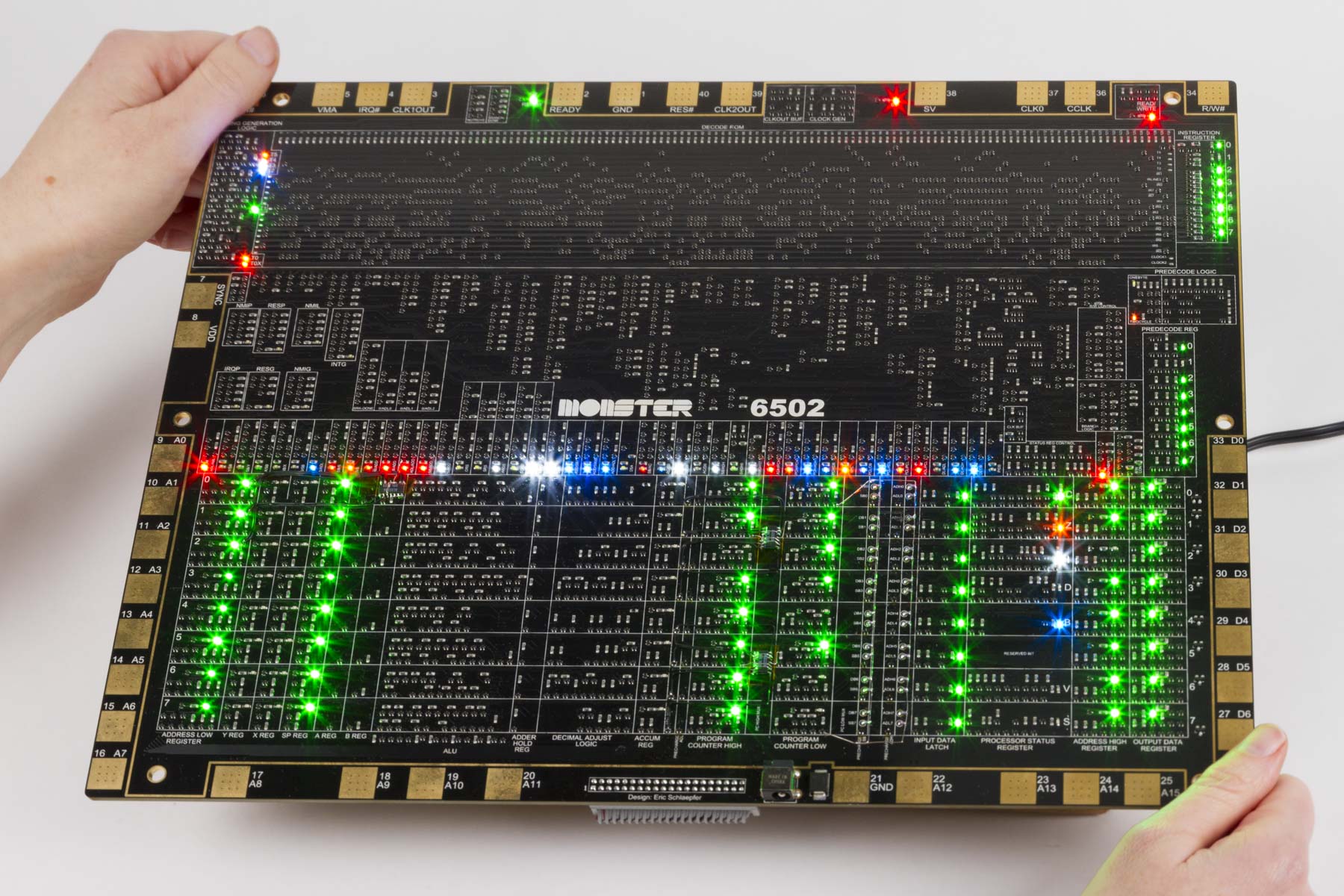The 6502 is the famous processor found at the core of such influential computer systems as the Apple ][, the Commodore PET, the Atari 400 and 800 home video game consoles, the BBC Micro, and the Tamagotchi digital pet and now it has been realized as a MOnSter PCB using transistors.

The second revision of the board has 4769 parts comprising:
- Components that correspond 1:1 with transistors in the original 6502:
- Total active transistors: 4237
- 3218 enhancement mode n-channel MOSFETs
- 2588 discrete
- 630 located on 164 quad transistor array chips (26 of these 656 transistors are not used)
- 1019 resistors (the original 6502 used depletion mode MOSFETs in place of resistors)
- 3218 enhancement mode n-channel MOSFETs
- Total active transistors: 4237
- 998 Additional parts present only in the MOnSter 6502:
- 313 LEDs (The first revision board, shown in the video, has only 167 LEDs)
- 270 extra MOSFETs for driving the LEDs
- 20 filter capacitors
- 32 bus capacitors
- 2 zero-ohm jumpers for net tie reasons
- 8 current limit resistors
- 314 resistors for the LEDs
- 36 diodes for ESD protection
- 2 jacks for 5 V power: main and alternate location
- 1 rectangular connector for the 40-pin "ICR" ribbon cable

It draws up to roughly 2 A at 5 V, or 10 W total. The LEDs are a significant part of the power consumption.
The MOnSter 6502 is relatively slow compared to the original, thanks to the much larger capacitance of the design. The maximum reliable clock rate is around 60 kHz. The primary limit to the clock speed is the gate capacitance of the MOSFETs that we are using, which is much larger than the capacitance of the MOSFETs on an original 6502 die.
The 40 square pads around the edge of the circuit board correspond to the 40 pins of the original 6502 integrated circuit. They're also designed to look like the wire-bond contact pads on an IC die — where the IC would be physically connected inside (for example) a 40-pin DIP package. These pads are functional contact points on the MOnSter 6502; you can hook up to them with alligator clips to probe or communicate with any pin.
It is currently running on a custom 6502 development board and doing things like running running BASIC, much as you would on an Apple ][.
The MOnSter 6502 is a continuing work in progress, designed by Eric Schlaepfer, in collaboration with Evil Mad Scientist Laboratories

